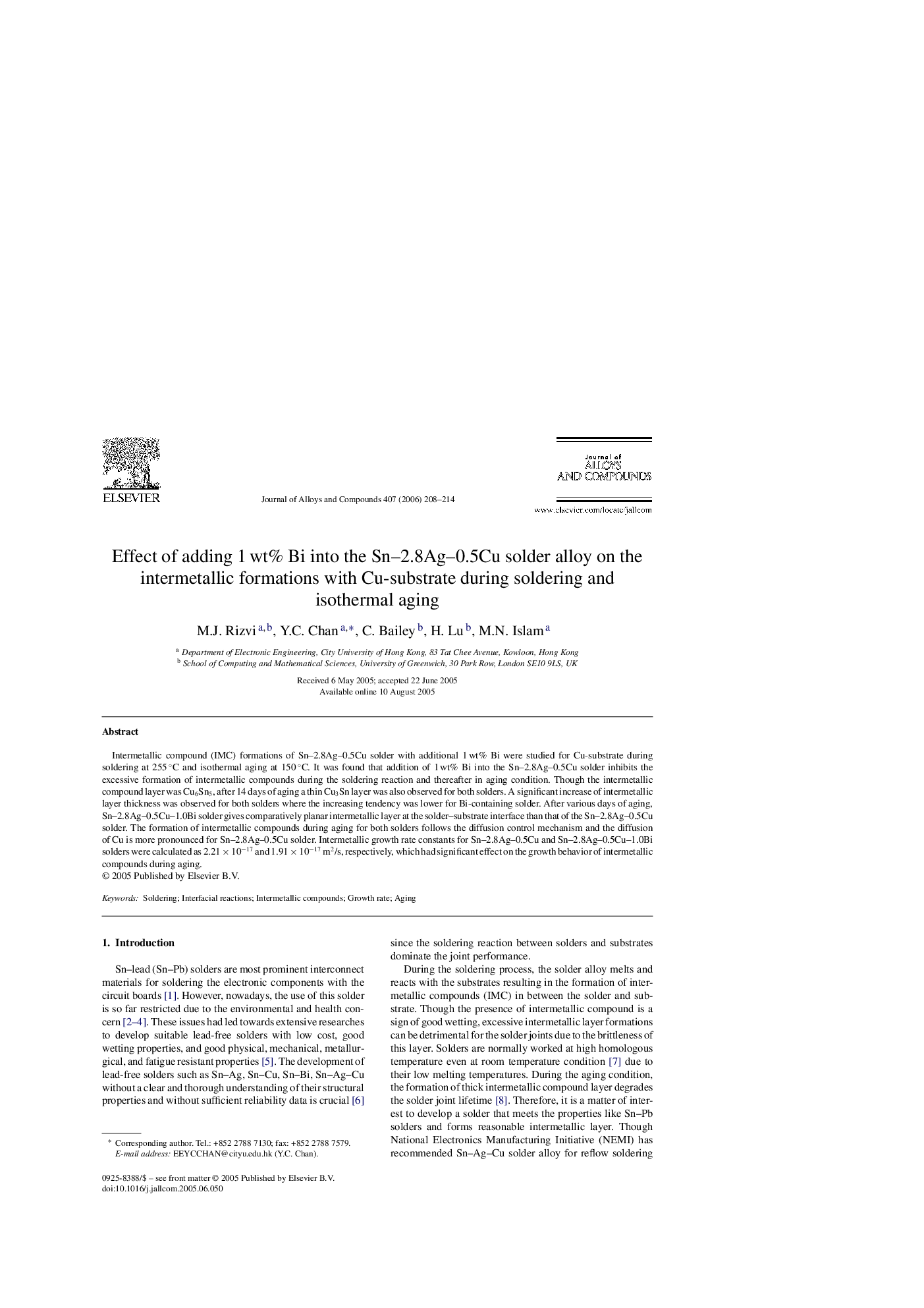| Article ID | Journal | Published Year | Pages | File Type |
|---|---|---|---|---|
| 1628014 | Journal of Alloys and Compounds | 2006 | 7 Pages |
Intermetallic compound (IMC) formations of Sn–2.8Ag–0.5Cu solder with additional 1 wt% Bi were studied for Cu-substrate during soldering at 255 °C and isothermal aging at 150 °C. It was found that addition of 1 wt% Bi into the Sn–2.8Ag–0.5Cu solder inhibits the excessive formation of intermetallic compounds during the soldering reaction and thereafter in aging condition. Though the intermetallic compound layer was Cu6Sn5, after 14 days of aging a thin Cu3Sn layer was also observed for both solders. A significant increase of intermetallic layer thickness was observed for both solders where the increasing tendency was lower for Bi-containing solder. After various days of aging, Sn–2.8Ag–0.5Cu–1.0Bi solder gives comparatively planar intermetallic layer at the solder–substrate interface than that of the Sn–2.8Ag–0.5Cu solder. The formation of intermetallic compounds during aging for both solders follows the diffusion control mechanism and the diffusion of Cu is more pronounced for Sn–2.8Ag–0.5Cu solder. Intermetallic growth rate constants for Sn–2.8Ag–0.5Cu and Sn–2.8Ag–0.5Cu–1.0Bi solders were calculated as 2.21 × 10−17 and 1.91 × 10−17 m2/s, respectively, which had significant effect on the growth behavior of intermetallic compounds during aging.
